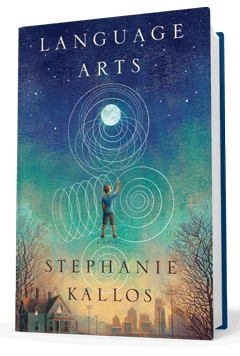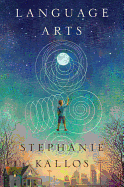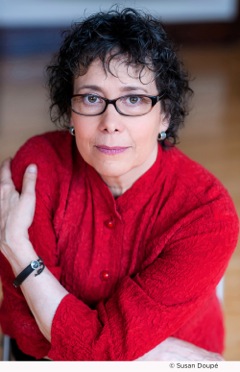Language Arts
by Stephanie Kallos
Nothing can crush a parent like the discovery that his child carries an incurable disorder--and nothing can stress a marriage like the demands of and potential conflicts in caring for such a child. A meaty saga of a Seattle couple's struggles in raising a son born on "the autism spectrum," Stephanie Kallos's third novel, Language Arts, tackles head-on the life-changing impact of the diagnosis that confirms their worst fears.
When Alison, the daughter of a wealthy family, meets the bumming-around bartender Charles Marlow at a fancy wedding reception, they begin a cross-country epistolary courtship in which she ends one letter with "P.S. I'll want to have children right away." And so she does. Son Cody arrives shortly after they marry and move into a quaint "storybook cottage" in Seattle where Charles begins a career teaching high school Language Arts. When Cody's growing vocabulary seems suddenly to vanish, "Charles and Alison looked on, useless, as the affectionate, puckish, inquisitive little person they had been coming to know and cherish began powering down, shutting off, shrinking into the farthest corner of some doorless, windowless inner sanctum to which they could find no access." They have their house repainted and remodeled to avoid potential "sick house syndrome" causes. They join support groups. They read the latest medical studies. They investigate special care facilities and treatment options. And they argue. Charles prefers to think of Cody as he is, not as a patient. Alison prefers to attack his condition aggressively with the latest weapons. They divorce. Cody settles into the circumscribed world of institutional rules and routines. Nobody is particularly happy. On this basic framework, Kallos builds a more complex story.
Once active in the theater life (on stage and off), Kallos is no stranger to shifting scenes, large casts and multiple themes. In her previous novels Sing Them Home and Broken for You, she showed a penchant for a meandering story teeming with characters; a broad concern with family, death and disease; and even a touch of "magical realism" with ghosts and voices from the beyond. Likewise in Language Arts, her story migrates from the present to the early 1960s as she digresses to a momentous year when Charles is in fourth grade. We learn that his son, Cody, is not his first experience with a "developmentally challenged" child. Since childhood Charles "had firmly established himself as a boy who was neither bright nor riotous but merely obedient," until he discovers a gift for the Palmer Method of penmanship taught in the school's newly established Language Arts curriculum, and befriends Dana McGucken, an odd student given to incomprehensible vocal outbursts and taunted by the class bullies as a "ree-tard." Chosen by his teacher Mrs. Braxton to lead the class in performing the endless Palmer practice loops, Charles privately shows Dana how to lock his hand and arm to find the right speed to make perfect loops ("too slow will make one feel clunky... a cog out of whack, a set of misaligned zipper teeth"). Dana is delighted and spends the rest of the school year worshipping Charles and demanding that they draw loops together. But bullies being bullies, their cruel classmates also begin to target Charles until he abandons Dana, leaving him to their abuse. It is a memory he can't shake, and it affects his approach to Cody: "He didn't think of his son as backward or flawed... the word pale sometimes seemed right--before, Cody had been an oil painting, dense, textural, color-saturated, layered... but his portrait [now] had thinned and flattened, changing to a watercolor."
As the novel unfolds, the importance of language connects the digressive stories of the Marlow family and those who intersect it--the therapists, students, colleagues, neighbors, caregivers and Cody's institutional housemates. Since childhood, Charles has preferred words and handwritten communication to social interaction. After he and Alison divorce, Charles lives alone, writing longhand letters to their daughter, Emmy, at college (who may or may not be real). He struggles to describe his love for Cody: "Words were what he had, what he sought--what he'd reached for since childhood in times of fear, sorrow, confusion." He laments his students' world, where "the only writing any of them did... was accomplished with the assist of a keyboard too small to be operated by anything other than thumbs." In his teaching he hopes to help his class "find words they were head-over-heels crazy about."
Language, however, is not the only path to communication and understanding. In an ah-ha moment, Charles watches Cody form a bond with Giorgia, an old nun who went mad after the Second World War and now finds herself living in Cody's institutional "home," where she speaks only Italian and makes collages out of magazines that Cody rips apart. When Charles teaches Cody to make Palmer loops to draw on the nun's collages, he sees the same thrill in his son that he saw in Dana so many years before. Kallos closes the circle and knits the novel's disparate threads into a place of modest contentment for Charles. As he writes to Emmy, "just because one has no expectations doesn't mean one has no hope." --Bruce Jacobs








